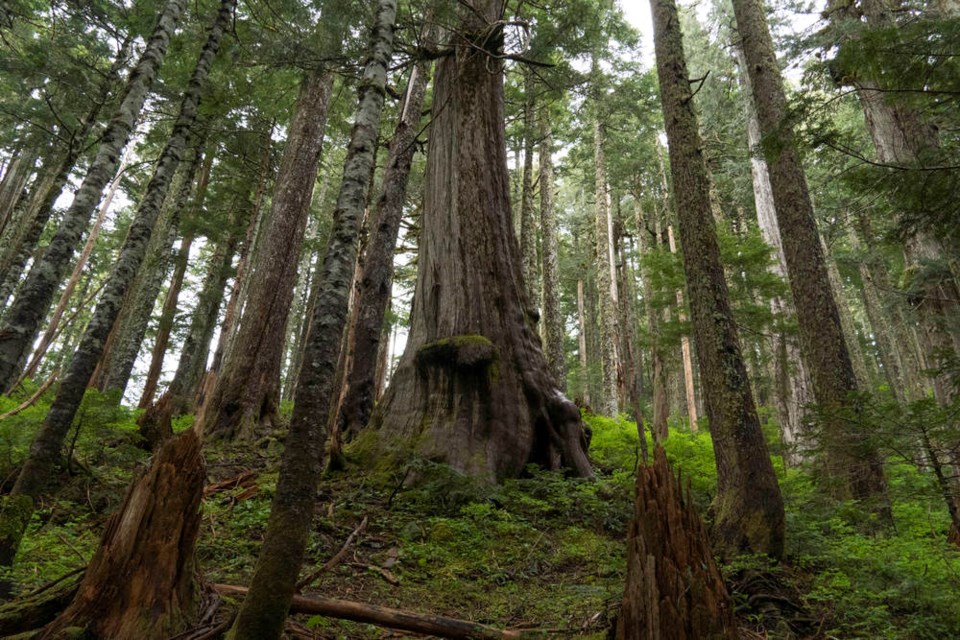A commentary by a 40-year veteran of the B.C. Forest Service who held senior professional positions in inventory, silviculture and forest health.
Jobs in British Columbia’s forest sector have become a talisman exploited by the forest industry and its associations in persuading politicians of the importance of the sector to the provincial economy.
As forestry jobs have steadily declined, industry lobbyists such as the Council of Forest Industries, Resource Works and the Truck Loggers’ Association have become increasingly creative in overstating the contribution of the forest sector to the provincial economy by inflating job numbers with indirect jobs.
If Statistics Canada counted jobs this way, we would have many more jobs than there are residents in the province.
Between the years 2000 and 2019, the forest sector of British Columbia shed 50,000 direct jobs largely due to mechanization and depletion of old-growth forests. About the same number, 50,000, remain, mostly in manufacturing.
So let’s question the talisman. Is it that ridiculous to shed the remaining number of direct forestry jobs in the woods and manufacturing by, say, 40,000? Perhaps not. Let’s examine some of the compelling reasons for a reduced workforce in forestry:
Tree-cover loss expressed as area per capita is greater in B.C. than in most forested countries of the world; greater than in Brazil, Indonesia and Russia. This rate and extent of clearcut logging has a large carbon footprint.
The prevalence of highly flammable clearcuts and young plantations (less than 25 years) has becomes a significant driver of the size of wildfires … the mega-fires of recent years that destroy homes and affect air quality so badly that our health is endangered.
In fact, wildfires in B.C. have increased in size and intensity so dramatically that they, together with logging, now exceed fossil fuels as the province’s major source of climate-destabilizing carbon. You won’t find this in the provincial government’s carbon accounting because it has deftly chosen to ignore carbon emissions from logging and wildfire.
Consequences of clearcut logging more familiar to the reader include: The loss of the little remaining old-growth forests growing in ecosystems rich in biodiversity; the destruction of fish and wildlife habitat (salmon, caribou and grizzlies); and the relentless extermination and extirpation of animals, plants and fungii.
In many ways, climate change in B.C. is all about water. Here, clearcutting is instrumental in contaminating the drinking water for many rural communities; in depleting groundwater causing more frequent and prolonged drought events; and, of huge concern to the residents of Grand Forks and the Okanagan valley, in increasing the frequency, magnitude and duration of major flood events.
The excessive rate of clearcutting is permitted by a grossly inflated allowable annual cut. But the question is: To what end? Only 20 per cent of the forest products derived from clearcutting is destined for our domestic market.
The remaining 80 per cent satisfies export markets mostly in the United States, China and Japan, all of which have higher standards for the conservation and protection of old-growth forests than does B.C. This means that those three countries are conserving their ecosystems at the expense of the degradation of our ecosystems.
In spite of the high level of exports of forest products, the forest sector contributes a meagre two per cent to the provincial gross domestic product and only two per cent to the provincial labour force. In other words, our provincial economy is sufficiently robust and resilient to absorb further job losses in forestry and reduced exports of raw logs and forest products.
Accordingly, would it not be in the public interest to ban clearcutting and substantially lower the allowable annual cut, thereby reducing the export of raw logs and forest products and cutting back the labour force in the forest sector?
If we as a society in B.C. can shed 400,000 jobs in two months of 2020 to deal with a global pandemic, is it that ridiculous to transition, say, 40,000 forestry jobs into non-destructive forest and value-added enterprises, and into other economic sectors in order to mitigate a global climate emergency already having such profound consequences for B.C.’s environment and residents?
- - -
To comment on this article, email a letter to the editor: [email protected]


